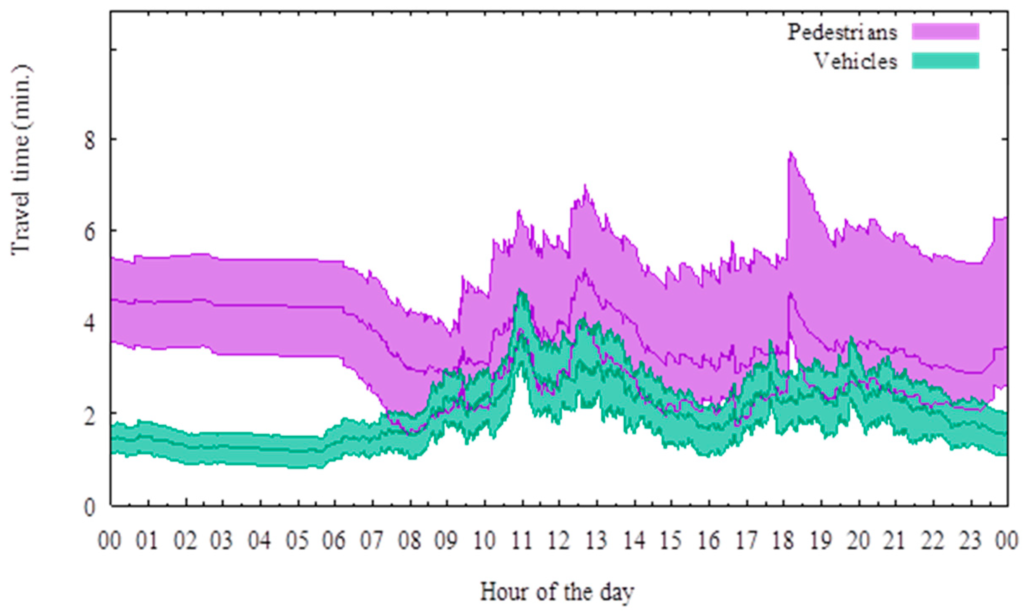Javier Martínez Plumé, Juan José Marténez Durá, Ramón Vicente Cirilo Gimeno, Francisco Ramón Soriano García and Antonio García Celda of Universitat de Valencia, Spain have a recent paper on Evaluation of the Use of a City Center through the Use of Bluetooth Sensors Network.
The research looks into using the occurrences of detected Bluetooth MAC addresses to differentiate between vehicles and pedestrians. It’s based on a study that was carried out in the city of Valencia that presented significant complexity due to the large number of pedestrians and motor vehicles.
“Conditions sometimes cause travel times between pedestrians and vehicles to be very close or overlapping, making it impossible to distinguish between trips associated with a pedestrian or with a vehicle by just using travel times”

The researchers implemented a filtering algorithm for the classification of trips so as to distinguish between pedestrians and vehicles using the occurrences of detected MAC addresses.
The results of the study found that 60–70% of the vehicles, in a given itinerary, used the historic centre as a shortcut through the city. These findings caused the City Council of Valencia to take the decision of limiting the traffic speed in the historic centre to 30 km/h so as to encourage use of the city inner ring road where 50 km/h is allowed.
Sensing such as this is part of ‘Smart Cities’, with aims such as reducing pollution, easing traffic and encouraging walking and cycling.